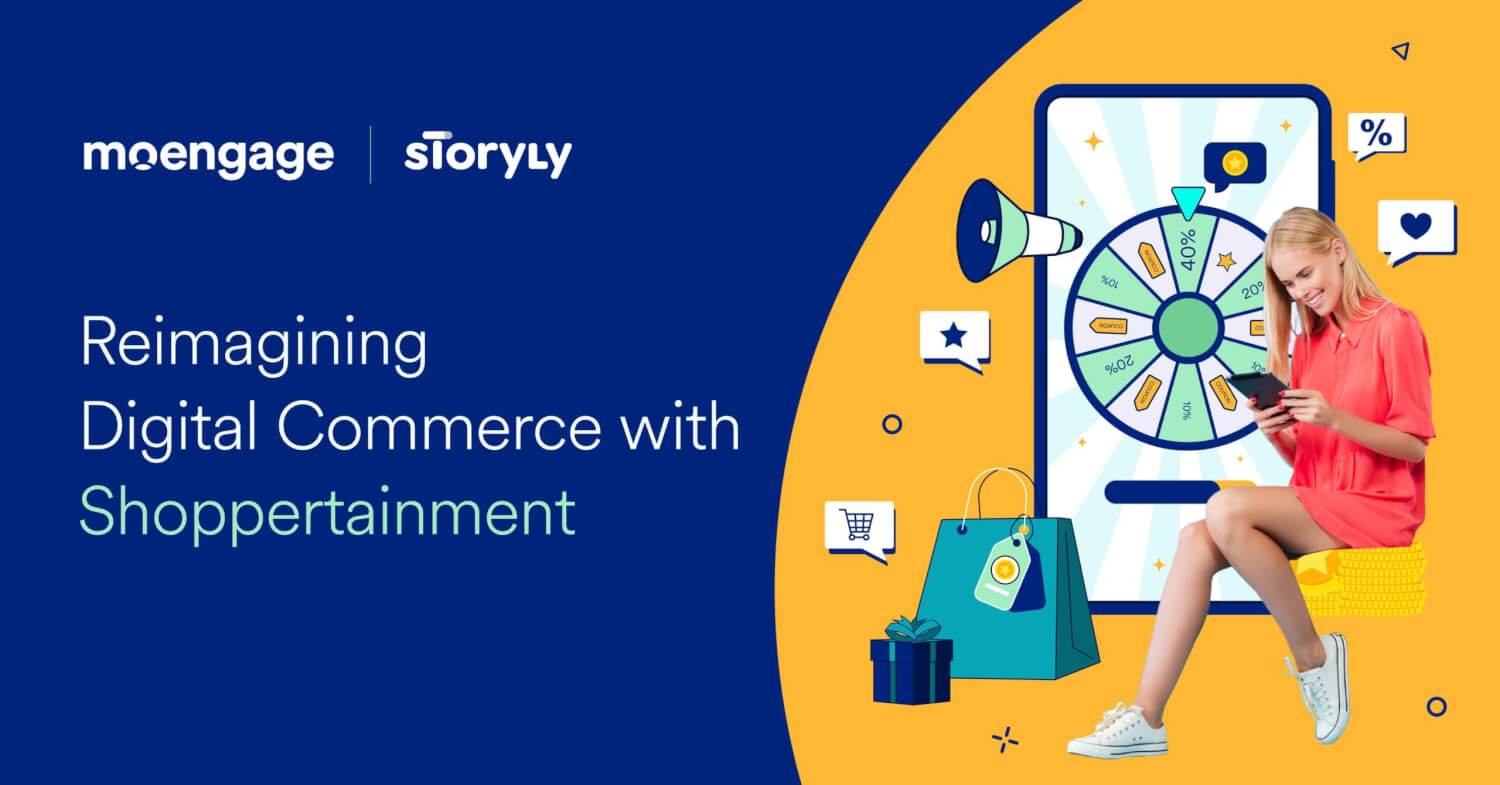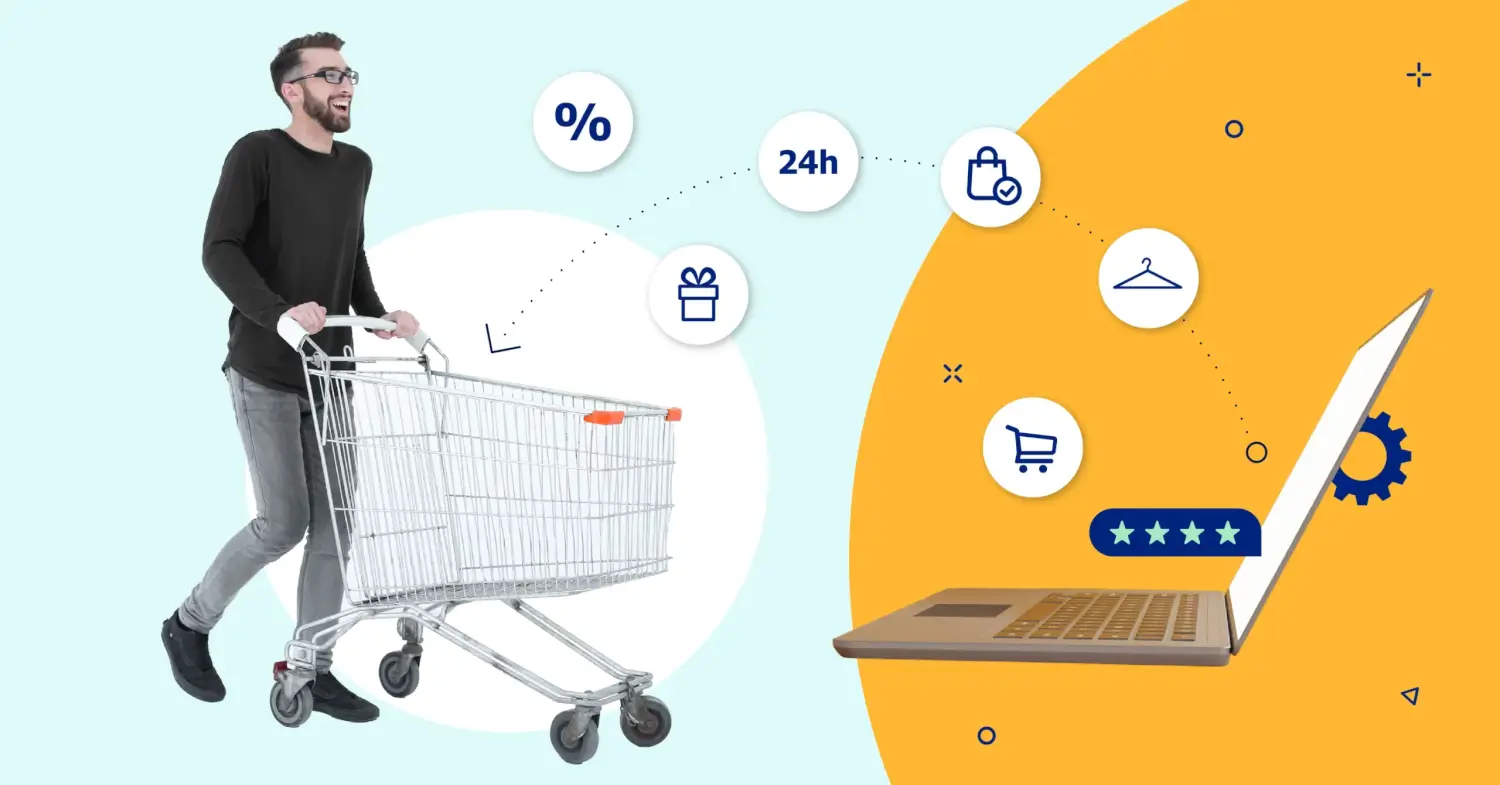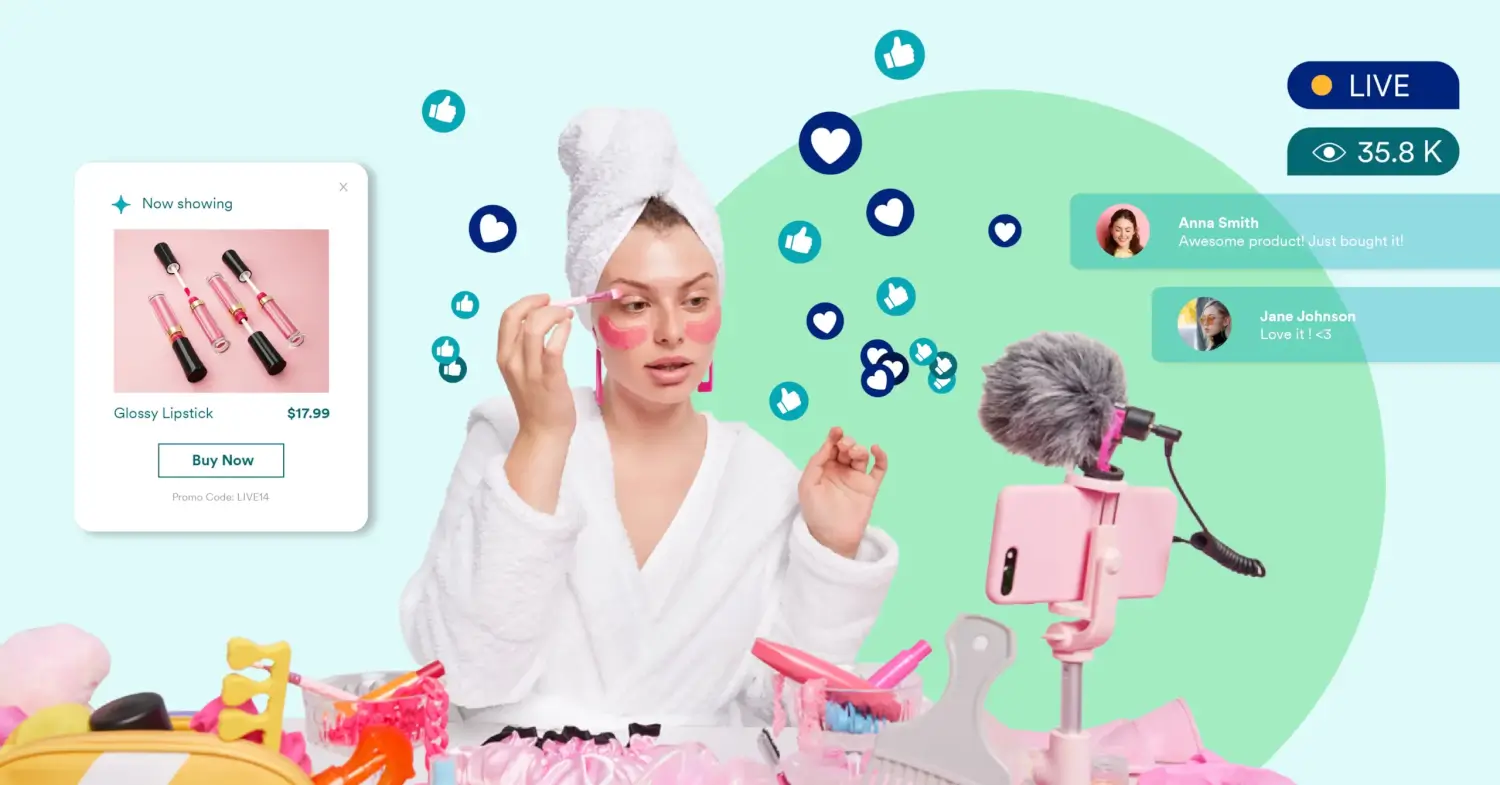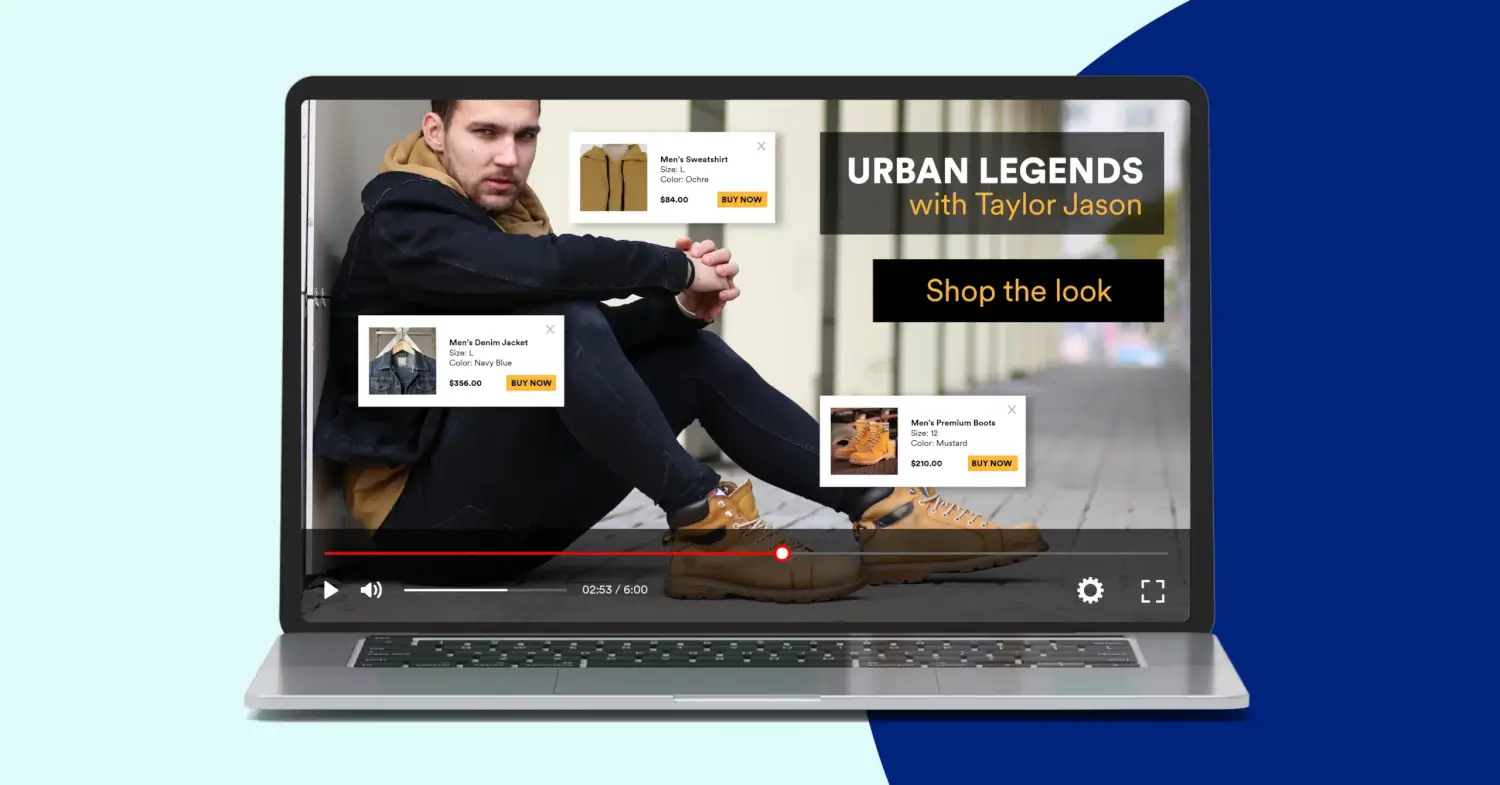Reimagining Digital Commerce with Shoppertainment

Reading Time: 7 minutes
A fascinating concept has emerged in the ever-evolving commerce landscape – ‘Shoppertainment.’ This transformative combination of shopping and entertainment is not just a buzzword but a cultural shift redefining the retail experience. It’s about orchestrating a shopping experience that captivates customers, sparks creativity, fosters loyalty, and ultimately boosts conversion rates.
The aim here is to take you on a journey through the dynamic evolution of shoppertainment, unveiling how it has seamlessly integrated into daily shopping habits and revealing its potential for the future of e-commerce.
The Evolution of Shoppertainment
Let’s take a step back in time. Do you remember those cheesy, over-the-top, or, as my daughter would put it, “cringeworthy” infomercials from the 80s? Despite their outlandish flair, they were very effective in hooking the TV audience with the “entertainment” factor.
Yet, shoppertainment’s footprint extends beyond the television screen. It has long been a part of brick-and-mortar shopping, introducing excitement into shoppers’ regular retail visits. For example, in-store attractions, visually-arresting storefronts, sweepstakes, and in-store goodies have always made offline shopping a memorable experience.
However, with the growth of online shopping, it has become inevitable for retailers to translate this strategy into their digital platforms. In fact, last year marked a milestone in e-commerce, with sales surging past 1 trillion dollars. This presents a huge opportunity for brands like yours to grab. However, it requires some creativity to win over shoppers.

In today’s digital landscape, the focus is heavily on the rise of AI-powered tools. While these tools play a significant role in enhancing customer experience, they are not a standalone solution. They do not, on their own, possess the magic to create lasting impressions or deeply engaged customers. This is where shoppertainment steps in.
Shoppertainment fills the gap between technological advances and the human need for connection and entertainment. It harnesses the power of AI, but it also adds essential spices like fun, creativity, and engagement. Because in the end, to truly resonate with customers, you must remember that you are not only dealing with data and algorithms but also the hearts and minds of your customers.
A Trillion-Dollar Frontier Born in Southeast Asia
Southeast Asian businesses have been capitalizing on shoppertainment’s potential for the better part of the last decade. From live-streaming fashion shows to virtual makeup try-ons, retailers in the region have been using shoppertainment to create exciting and engaging experiences. One standout example is Alibaba’s Taobao, which empowers sellers to showcase their products to prospective buyers through engaging video content.
The impact of shoppertainment is remarkably evident in certain categories. Fashion and accessories attribute 18% of their market value to shoppertainment, while beauty and personal care products see a 14% contribution. Food and beverages have also tapped into its potential, with 13% of their market value coming from shoppertainment, according to a study by Boston Consulting Group and TikTok.
The study also identifies shoppertainment as a key to “unlocking a trillion-dollar opportunity.” BCG and TikTok forecast this field to become a 1-trillion-dollar market by 2025 – a striking increase from its current value of 500 billion dollars. The pandemic which locked down the world for two long years has served as a catalyst for the growth of shoppertainment. Shoppertainment is slated to change the future of the market, prompting many to speculate that traditional e-commerce could soon be a thing of the past.
The Rising Global Shoppertainment Wave
Although the shoppertainment trend emerged in the Asia-Pacific market, it’s about to become a global phenomenon. According to Statista’s research in 2022, almost 55% of the consumers in the US have watched a live or pre-recorded video shopping event. And according to GWI Zeitgeist, 29% of consumers regard entertainment as a factor influencing their purchasing decisions. While this figure may seem modest, it is the third most influential factor, trailing behind free returns and an easy checkout process. This shows that shoppers demand entertainment in the form of authentic, emotional content and experiential engagement opportunities.

Where Do Shoppers Currently Find Entertainment?
Predominantly, on social media.
Imagine this: You’re lounging at home, riding on the bus, or sitting in a coffee shop – perhaps waiting for a friend who’s running late. Boredom creeps in. Almost instinctively, your hand reaches out for your phone. Then what do you do? Automatically you start flipping through your favorite social media apps – Instagram, Facebook, YouTube, TikTok, Pinterest, and maybe even Twitter.
A fun fact: on average, a person picks up their phone 96 times a day!
Despite the engaging environment, transactions are rarely the main motivation of consumers when using social media. No wonder only 4.4% of online retail sales happen on social media.
While social media is an excellent tool for promoting your brand and connecting with shoppers, there are more reliable avenues for the remainder of their shopping journey. Most of the time, it only adds an additional step, creating friction (or even distraction) in the process.
You would have heard how Facebook attempted to offer a live shopping option, which was shuttered in October 2022, and how Instagram also deprioritized its shopping tab recently.
Would you be content with catching the shopper’s eye, only to lose their attention within a fleeting moment? Surely not. So why not cut the middleman and bring the entertainment directly to your own platform? After all, why let a captivating shopping journey end prematurely when it could smoothly transition into a conversion?
Embracing the Inevitable: Combining Shopping with Entertainment
The best strategy is to hop on to the shoppertainment train before the competition is way ahead of you. With so many brands saturating the market, it is getting more and more challenging to slide into the limited consideration span of shoppers. Differentiating yourself from the competition is about more than just the product. The real game-changer is the experience you deliver. In a world where shoppers are bombarded with nearly 10,000 messages and signals every day, it’s imperative to make your brand stand out!
For this, you must create unique strategies that lure shoppers to your digital doorstep, enchant them with entertaining content, and most importantly, convert these entertaining moments into sales.
The challenge lies in attracting shoppers and then retaining their attention, inspiring repeated visits, and convincing them to complete their purchases – a difficult task considering the 70% online cart abandonment rate.
Shoppertainment, if implemented correctly, can completely transform this landscape. But what makes a shopping experience truly entertaining?
1) Storytelling
There’s nothing like a compelling story to create an emotional connection between the shopper and the product or brand. Whether it’s about a product designed to solve a relatable problem or the mission/values of your brand, a well-told story can inspire purchases and foster a deeper, long-lasting relationship with your customers.
2) Authenticity
An authentic brand resonates with customers, creating a trustworthy and credible image. This is not about hard selling but about demonstrating genuine interest in providing a valuable experience to your customers.
3) Video-centric Approach
In the digital marketing sphere, video content has become one of the most effective ways to reach and connect with your audience. While some might equate shoppertainment with lengthy live shopping interactions, don’t let that deter you. When it comes to video, short-form is king, thanks to platforms like Instagram, TikTok, and Snapchat. Their content are snackable, which makes them perfect for our fast-paced world.
In addition, video podcasts are also a popular medium for content creators, marketers, and businesses looking to connect with their audiences. With the right tools to record video podcasts, this can be an excellent avenue to collaborate with influencers and interact with your products through videos, building trust and credibility with potential buyers.
Various studies show that consumers prefer watching a short product video over reading a description. Thus, shoppable short videos become a potent tool for delivering entertaining shopping experiences.
How to Build a ‘Shoppertaining’ Experience
So how does this invigorating strategy, shoppertainment, reshape the online retail ecosystem? And how can you integrate it into your playbook? The answer is integrating shoppable video content on your own platform.
As the term suggests, shoppable video content is a unique form of media that enables shoppers to:
- Discover products within videos,
- Instantaneously add featured items to their carts,
- Complete a purchase.

However, there’s more to it than just videos. Indeed, video content is engaging. But how can you make it even more entertaining?
The answer lies in three crucial elements: interactivity, personalization, and inspiration.
1) Interactivity
Shoppers today, across all generations, do not tolerate being merely the audience. They crave participation, value dialogue, and demand engagement in their shopping experiences. That’s when interactivity enters the chat.
There are so many cool and creative ways to add interactive content to your digital store, such as quizzes and polls. These type of content not only make shopping more enjoyable but also help customers learn more about your products and make more informed purchasing decisions. It is also an incredible way to get to know your shoppers through firsthand information about them.
2) Personalization
We’re all aware that one size doesn’t fit all. Imagine that you walk into a store and the sales associates greet you by name and recommend products based on your past purchases.
It feels pretty good, right? The same goes for e-commerce.
In e-commerce, this personal touch can be provided using zero-party data, i.e. information willingly shared by customers about their preferences and expectations. Such data-driven shopping personalization enhances the customer experience, making it more enjoyable and memorable.
3) Inspiration
Inspiration has been integral to commerce for decades, considering consumers have wandered through shopping districts to catch the latest trends, often without immediate intent to purchase. But this aspect has been reinvented in the digital era, with technology enabling new means of providing inspiration.
Branded content, such as product videos or behind-the-scenes footage, can deliver inspiration in a captivating manner. Further, collaborations with influencers, content creators, and celebrities can amplify your shoppertainment initiatives. By having them create content for your platform (as opposed to social media), you can leverage their established audience and influence, reaching a wider demographic who trust their recommendations.
And “influencing” today is not limited to influencers with more than 10 thousand followers. In this era of authenticity, user-generated content, like reviews and testimonials, can form a vital part of your shoppertainment strategy. Featuring such content on your platform can foster social proof and trust, increase engagement, and build a sense of community around your brand.
Need proof of the power of inspiration? Look at TikTok. The hashtag #TikTokmademebuyit, viewed over 8.1 billion times at last count, underscores the pivotal role of inspiration in shopping.
Conclusion
All that being said, to what end should you invest in shoppertainment?
In e-commerce, there are two paths possible: (i) Capturing the demand and (ii) Generating the demand. The first one depends heavily on the existing shopper intent and demand. The latter is a path where you have to get creative to trigger an action from the shopper. That’s the promise of shoppertainment, it helps you generate demand.
We’re currently living in an era where experiences are valued more than ever. Shoppertainment is a great opportunity for you to refresh your approach to e-commerce. Using the right tools, adopting the right tactics, and sprinkling a dash of creativity on top of it all, there is no reason why you would not be able to blend entertainment and e-commerce. And of course, this will eventually translate into increased customer engagement, better brand loyalty and awareness, and higher conversion rates.








